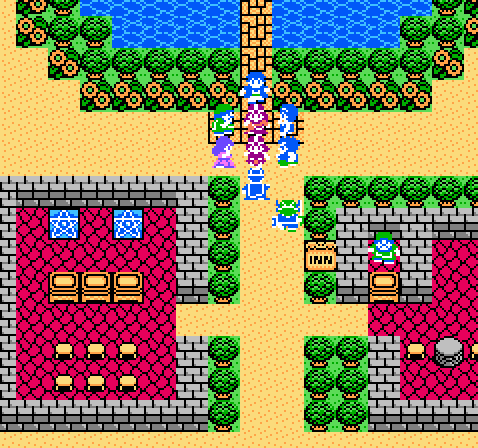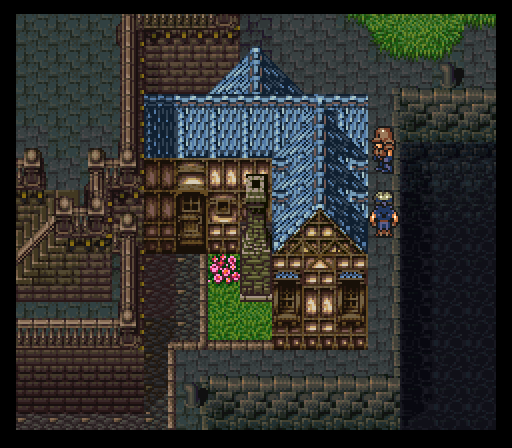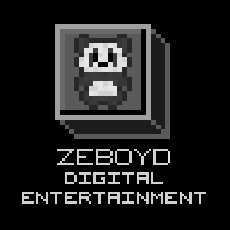Since I’ve noticed some confusion on the subject, here’s a quick primer.
This is a screenshot of an 8-bit RPG (Dragon Quest IV, NES):
This is a screenshot of a 16-bit RPG (Final Fantasy VI, SNES):
Notice how the two screenshots are very different in detail & number of colors used?
I would include a 32-bit RPG example as well, but in the 32-bit era (Saturn, PS1), there was much greater variety in visual styles with some games using 2D but with more detail, animation, and effects than in 16-bit RPGs (Breath of Fire 3-4), some games using a mixture of 2D & 3D (Grandia, Xenogears), and some games using 3D characters on top of prerendered or FMV backgrounds (FF7-9, Parasite Eve 1-2).
Feel free to bookmark this page & refer to it when you’re not sure whether to refer to a game as an 8-bit or 16-bit RPG.




@ Ummy
Appreciate the clarification… I always had ideas about early game development, but never any real facts. I dabbled in DOS waaaaaaay back in the late 80’s, but that’s the extent of my knowledge…. I wasn’t that great at it as I recall, but that’s another story. I will reiterate my point about acknowledging the earlier consoles and games as “works of art” much like people associate the Mona Lisa with “fine art”… If we already had this established, the thread would be a moot point. Again, truly appreciate you taking the time to educate myself (and others) on early pixel graphics.
It’s fine to comment on older posts. Just make sure that your comment is clearly related to the post in question, otherwise, I’ll accidentally tag it as spam.
There’s a good chunk of diversity on the SNES with games like Treasure Hunter G (uses prerendered everything,a bit similarly to Golden Sun; see http://i.imgur.com/Mvm2ol3.png ), Super Mario RPG and Energy Breaker ( http://i.imgur.com/Ft3w860.png ). and Actraiser’s strategy world looks like an NES game (not an RPG, though).
Still, this is probably the easiest way to tell which bit/style a game is.
@BLKMSK CEO
A bunch of older games had split graphics like stages into tiles (small images that are, like, 16×16, though size can vary) and the devs wrote code to make the tiles repeat in different ways to make different objects in order to reduce size. You could see this clearly in the DQ V image posted with the trees and walls. Some games did this for enemy characters, too; I recall seeing large enemy sprites from Mega Man split into 4 smaller sprites. Pixels take up less space when you have fewer colours to choose from as well.
Oh, and do you mind if I post on older posts, Admin? Some blogs send emails to the author when a response to a post is made and I wouldn’t want to send email spam accidentally.
@Andrew
I agree to an extent with your post… The reason “pixel” took up so much room is (and this is purely m opinion) that they were using bitmap files way back then… Vector is smoother, sharper and takes up less file space. With bitmap files, each pixel in a sprite would be individually “tagged” and saved as a file. So you can imagine if you had a decent size sprite the amount of memory needed to save that image would have been huge way back in the hay day of game deving. Again, this is all purely speculation. I’ve watched a ton of docs on the history of gaming, but they never seem to get richly in-depth with the information. It seems they either start with Ron Baer or Nolan Bushnell, and end it talking about Call of Duty… For once I’d like to hear about the techniques used back then… Anyway, didn’t mean to rant… I do hope that this “games as art” trend continues… It will only bring positive recognition to this medium… And in my opinion, we desperately need it.
As sad as it is it seems we are getting rid of the pixel slowly for making graphics. With vector graphics and voxel based 3D modeling we are making graphics works much smoother and better. Pixels take up a lot of memory and while a very interesting design style is going to the back seat gaming in general is still moving forward.
It is nice to hear about these museums. Video games are an art style as much as anything else!
A lot of kiddes surfing the site, huh??? Lol!!! Well, knowledge is power so let’s educate the gamers of this gen:
8-bit “sprites” pretty much got the spotlight back in the 80’s with the release of consoles such as the Nintendo entertainment system. With not much memory to work with, early models of sprites were crude at best, with the protagonist from the Donkey Kong title (Mario) being a shining beacon of this practice. The original design had Mario “without” a mustache, but it was very hard to distinguish where his mouth would be, so the artist decided to give him a “stache” so people could tell what they were looking at…. boy… Did it ever work. Mario went on to become a global gaming icon with titles still being produced today. I often wonder what the industry would look like if Shigeru Miyamoto didn’t scrap the Mario prototype… Probably a bleak “what if” scenario, but thank the gaming “gods” he did. Anyway, I suspect this won’t be an issue once the “history of video games” becomes a “mainstream acknowledgement”… Over on the west coast, video games are being shrined in museums as “works of art”. Hopefully the rest of the country can explore their “progressive” nature and catch up with California. Having outlets that archive the history of gaming would benefit all: both veteran gamers and current/next generation gamers who have no clue what a “pixel” is…